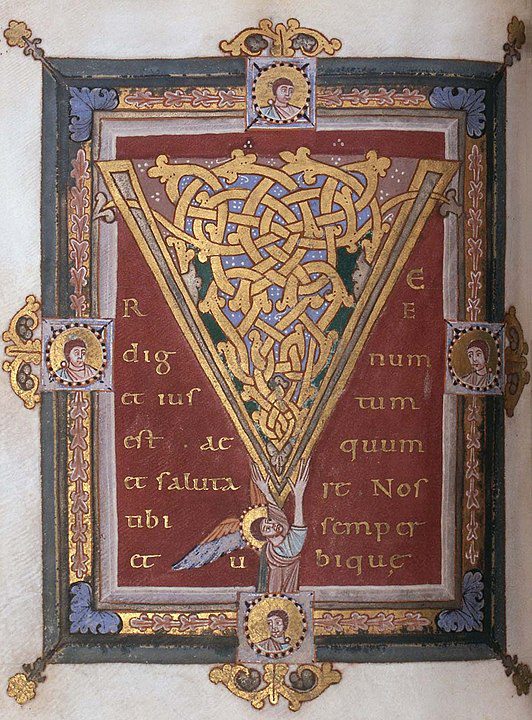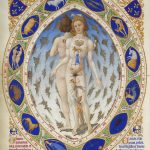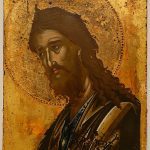
Medieval manuscripts are more than just old books. They are windows into a world where art, religion, and knowledge intertwined in a unique and intricate dance. But what often gets overlooked is the role of light in these manuscripts. Light wasn’t just about illumination; it played a symbolic and aesthetic role that was central to the meaning and beauty of these works.
Illuminating the Sacred: Light as a Symbol
In the medieval period, light was a powerful symbol. It represented the divine, the holy, and the pure. When monks and scribes worked on manuscripts, they weren’t just creating books. They were crafting objects that reflected their spiritual beliefs. Light, in this context, was not just about seeing; it was about understanding the divine.
The use of gold leaf in manuscripts is one of the clearest examples of light’s symbolic role. Gold was used to create halos around saints or to highlight the most important parts of a page. When the pages were turned, the gold would catch the light, making the image or text shimmer. This wasn’t just for decoration. It was meant to remind the reader of the heavenly light that illuminated the spiritual world.
Moreover, the use of light and color was closely tied to the idea of the sacred. Colors like blue and red were often used alongside gold to create a sense of depth and richness. Blue, in particular, was associated with the Virgin Mary and was a color that was difficult and expensive to produce. This made it even more valuable, and its use in manuscripts was another way to symbolize the divine.
Furthermore, the interplay between light and color in these manuscripts was not just about beauty. It was about creating a visual experience that connected the reader to the spiritual realm. The light reflected off the gold and the vibrant colors were meant to draw the reader into a meditative state, where they could contemplate the divine truths contained within the manuscript.
The Art of Illumination: Techniques and Materials
The creation of medieval manuscripts was an art form in itself. The use of light in these manuscripts wasn’t accidental; it was the result of meticulous planning and skilled craftsmanship. Illuminators, as they were known, were highly trained artists who used a variety of techniques to achieve the desired effects.
One of the most important techniques was the use of gold leaf. Gold leaf is extremely thin sheets of gold that were applied to the manuscript to create areas that would reflect light. The process was labor-intensive and required great skill. The gold was first applied to a sticky substance, often made from a mixture of garlic juice and honey, which was used to adhere the gold to the page. The gold was then carefully pressed down and polished with a burnishing tool to make it shine.
In addition to gold leaf, illuminators used other materials to create effects of light and shadow. They often used a technique called hatching, where fine lines were drawn close together to create the illusion of depth and shadow. This technique was used to give images a three-dimensional quality, making them appear to stand out from the page.
Furthermore, illuminators paid close attention to the way light would interact with the colors they used. They carefully chose pigments that would reflect or absorb light in different ways. For example, they might use a translucent pigment to create a glowing effect, or a dense, opaque pigment to create a sense of solidity and depth.
These techniques were not just about making the manuscript beautiful. They were about creating a visual experience that would engage the reader on a deeper level. The play of light and shadow, the shimmering gold, and the vibrant colors were all part of a carefully crafted aesthetic that was meant to draw the reader into the spiritual world of the manuscript.
The Role of Windows and Natural Light
While the materials and techniques used by illuminators were crucial, the role of natural light should not be overlooked. The way that light interacted with the manuscript as it was read or displayed was an important aspect of its overall effect. In many cases, manuscripts were designed with this in mind.
Medieval monasteries, where many manuscripts were created and studied, often had large windows that let in ample natural light. This light would have played a crucial role in bringing the manuscripts to life. As the light shifted throughout the day, it would have created different effects, making the gold leaf shimmer or the colors appear more vibrant. This dynamic interaction between the manuscript and natural light would have added to the sense of the manuscript as a living, breathing object.
Moreover, the placement of the manuscript within the room was often carefully considered. Manuscripts were often displayed on lecterns or in specially designed cases that allowed them to catch the light in just the right way. This was especially important in religious settings, where the manuscript might be part of a larger ritual or ceremony. The way that the light played on the manuscript could enhance its spiritual significance and help create a more profound experience for the viewer.
Additionally, the use of candles and other forms of artificial light would have also played a role. While natural light was preferred, candles were often used in religious ceremonies or in private study. The flickering light of a candle would have created a different, more intimate atmosphere, where the light interacted with the manuscript in a more subtle and mysterious way.
The interaction between the manuscript and light was not just about practical considerations. It was part of a larger aesthetic and spiritual experience. The way that light illuminated the manuscript, whether natural or artificial, was an integral part of its meaning and power.
The Science Behind the Art: Understanding Light and Vision
While the symbolic and aesthetic roles of light in medieval manuscripts are clear, it’s also important to consider the scientific understanding of light during the medieval period. Medieval scholars had a complex understanding of light and vision, which influenced the way they approached the creation and use of manuscripts.
In medieval thought, light was closely associated with knowledge and understanding. The ability to see was seen as a gift from God, and the study of light was considered a way to understand the divine. This belief was influenced by the writings of ancient philosophers like Plato and Aristotle, as well as the work of early Christian theologians like Augustine.
Medieval scholars believed that light was a physical substance that traveled through the air and entered the eye. They also believed that light had a spiritual dimension, which could illuminate the mind and soul. This dual understanding of light as both a physical and spiritual phenomenon influenced the way that light was used in manuscripts.
For example, the use of gold leaf in manuscripts can be seen as a way to embody this dual nature of light. The gold reflected physical light, creating a visual effect that could be seen with the eyes. But it also symbolized the spiritual light of divine knowledge, which could only be perceived with the mind and soul.
Additionally, medieval scholars were interested in the way that light interacted with color. They understood that different colors reflected and absorbed light in different ways, and they used this knowledge to create the vibrant, glowing colors that are characteristic of medieval manuscripts. They also understood that light could change the appearance of colors, depending on the angle and intensity of the light. This knowledge was used to create effects that would change as the manuscript was viewed from different angles or in different lighting conditions.
The Religious and Cultural Context of Light
The role of light in medieval manuscripts cannot be fully understood without considering the religious and cultural context of the time. Light was a central symbol in medieval Christianity, representing the presence of God and the illumination of the soul. This belief was reflected in the art and architecture of the period, and it played a significant role in the creation and use of manuscripts.
In the Christian tradition, light was associated with the creation of the world and the presence of God. The Bible begins with the words, “Let there be light,” and light was seen as a manifestation of God’s power and presence. This belief was reflected in the use of light in religious art and architecture, where light was often used to symbolize the divine.
In medieval manuscripts, light was used to create a sense of the sacred and the divine. The use of gold leaf, for example, was not just about creating a beautiful object. It was about creating an object that reflected the light of God and brought the reader closer to the divine. The shimmering gold was a reminder of the heavenly light that illuminated the spiritual world.
Moreover, the use of light in manuscripts was closely tied to the idea of the manuscript as a sacred object. Manuscripts were often treated with great reverence and care, and their creation was seen as a form of worship. The use of light in these manuscripts was a way to enhance their spiritual significance and to create a visual experience that would inspire devotion and contemplation.
The cultural context of the medieval period also influenced the use of light in manuscripts. During this time, light was often associated with knowledge and learning. The ability to read and study was seen as a way to illuminate the mind and soul, and the manuscript was seen as a source of light and knowledge. The use of light in manuscripts was a way to embody this idea, creating a visual experience that reflected the manuscript’s role as a source of spiritual and intellectual illumination.
The Legacy of Medieval Manuscripts and Their Use of Light
The role of light in medieval manuscripts has had a lasting impact on the art and culture of the Western world. The techniques and ideas developed by medieval illuminators have influenced the way that light is used in art and design to this day.
One of the most significant legacies of medieval manuscripts is the use of gold and other reflective materials in art. The use of gold leaf in manuscripts set a precedent for the use of reflective materials in art, which has continued through the centuries. Artists have used gold, silver, and other reflective materials to create effects of light and shadow, and to symbolize the divine and the sacred.
Moreover, the techniques developed by medieval illuminators, such as hatching and the careful use of color, have influenced the way that light and shadow are used in art. These techniques have been passed down through generations of artists and continue to be used in contemporary art and design.
The ideas about light and knowledge that were central to medieval manuscripts have also had a lasting impact. The association of light with knowledge and understanding is a concept that has continued to be important in Western thought. The idea of the “enlightenment,” for example, is based on the notion of light as a symbol of knowledge and understanding.
Furthermore, the spiritual and symbolic use of light in medieval manuscripts has influenced religious art and architecture throughout history. The use of light to create a sense of the sacred and the divine is a concept that has continued to be important in religious art, from the stained glass windows of Gothic cathedrals to the illuminated manuscripts of the Renaissance.
Preserving the Light: The Conservation of Medieval Manuscripts
The preservation of medieval manuscripts is a complex and challenging task. The materials used in these manuscripts, such as gold leaf and delicate pigments, are often fragile and sensitive to light and temperature. Conservation efforts are focused on preserving these materials while also allowing the manuscripts to be studied and appreciated.
One of the biggest challenges in conserving medieval manuscripts is protecting them from light damage. While light is an essential part of the manuscript’s aesthetic and symbolic meaning, it can also cause significant damage over time. Exposure to light can cause pigments to fade and gold leaf to tarnish, reducing the visual impact of the manuscript.
Conservators use a variety of techniques to protect manuscripts from light damage. These include controlling the amount of light that the manuscript is exposed to, using protective covers and cases, and monitoring the temperature and humidity of the environment where the manuscript is stored.
In addition to protecting the manuscript from light damage, conservators also work to repair and restore damaged manuscripts. This can involve cleaning and stabilizing the materials, repairing tears and cracks, and replacing missing or damaged gold leaf and pigments.
Conservation efforts are essential for preserving the beauty and meaning of medieval manuscripts. By protecting these fragile objects from light damage and other forms of deterioration, conservators ensure that they can continue to be studied and appreciated for generations to come.
Conclusion: The Enduring Power of Light
The role of light in medieval manuscripts is a testament to the creativity and skill of the artists and scholars who created them. Light was not just a practical tool for illumination; it was a symbol of the divine, a tool for artistic expression, and a central part of the manuscript’s meaning and impact. The techniques and ideas developed by medieval illuminators have had a lasting impact on the art and culture of the Western world, influencing the way that light is used in art, design, and religious practice to this day.
As we continue to study and preserve these remarkable objects, we are reminded of the enduring power of light. Whether it is the shimmering gold of a medieval manuscript or the glowing colors of a stained glass window, light continues to inspire and illuminate our world. The role of light in medieval manuscripts is a powerful reminder of the ways in which art, religion, and knowledge are intertwined, and how light, in all its forms, continues to illuminate our understanding of the world and the divine.




